How Australia could beat COVID-19 by July
New data about Australians’ movements shows Australian cities are finally taking social-distancing directions seriously — but we are way behind other countries.
Science
Don't miss out on the headlines from Science. Followed categories will be added to My News.
New data about Australians’ movements shows Sydney and Melbourne are finally taking social-distancing directions seriously — but it’s taken weeks to achieve.
The figures, collated by transport app firm Citymapper, also show Australia’s two largest capitals are behind the worldwide curve, with Italy, South Korea, Spain, and Japan rated among the top nations for reducing movements during the coronavirus pandemic.
The figures came after new modelling by the University of Sydney revealed Australia’s coronavirus spread could be controlled by July if strict social distancing measures were adopted, but it would only work if used by more than 70 per cent of the population.
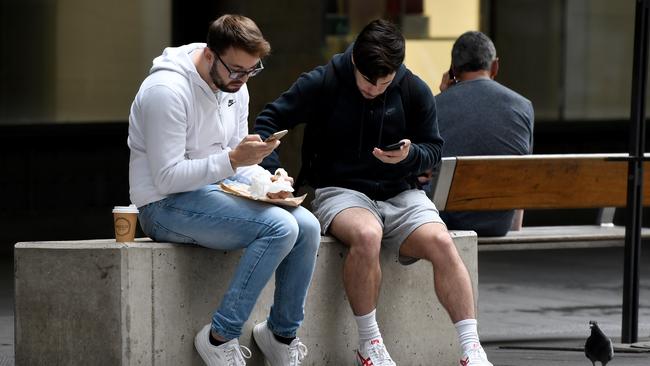
Figures from Citymapper showed Sydneysiders were moving around the NSW capital more than usual until March 9 but began to cut back on travel by the weekend of March 14.
Last week, Sydneysiders cut their travel by more than half over the week, and by Tuesday were making less than 30 per cent of their usual trips.
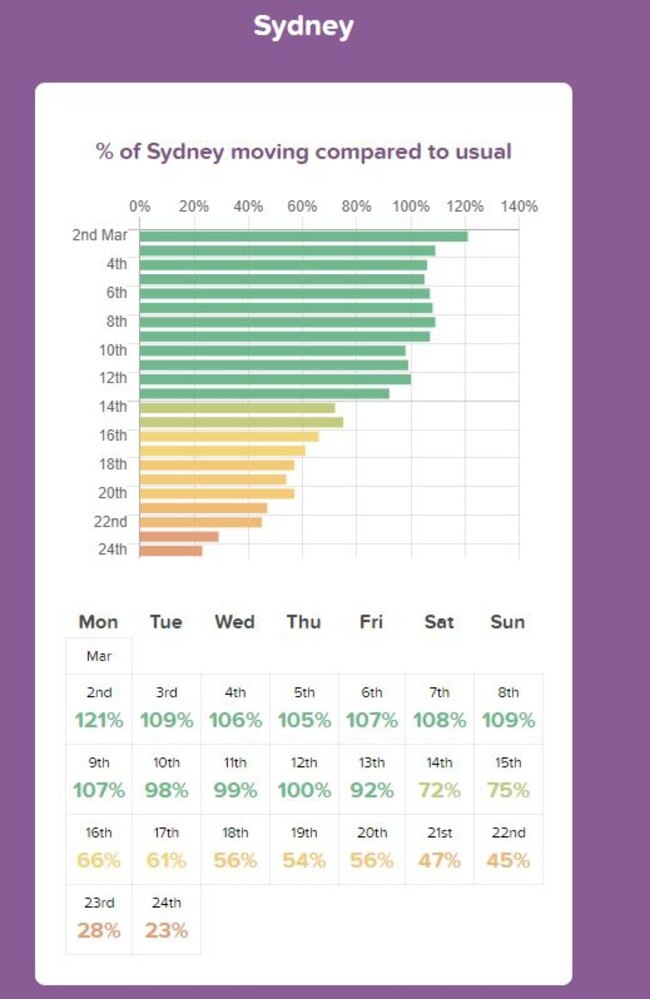
Melburnians have been slower to react to the changes, the Citymapper Mobility Index showed, with significant drops starting on Monday last week, and dropping to 33 per cent of regular movements within seven days.
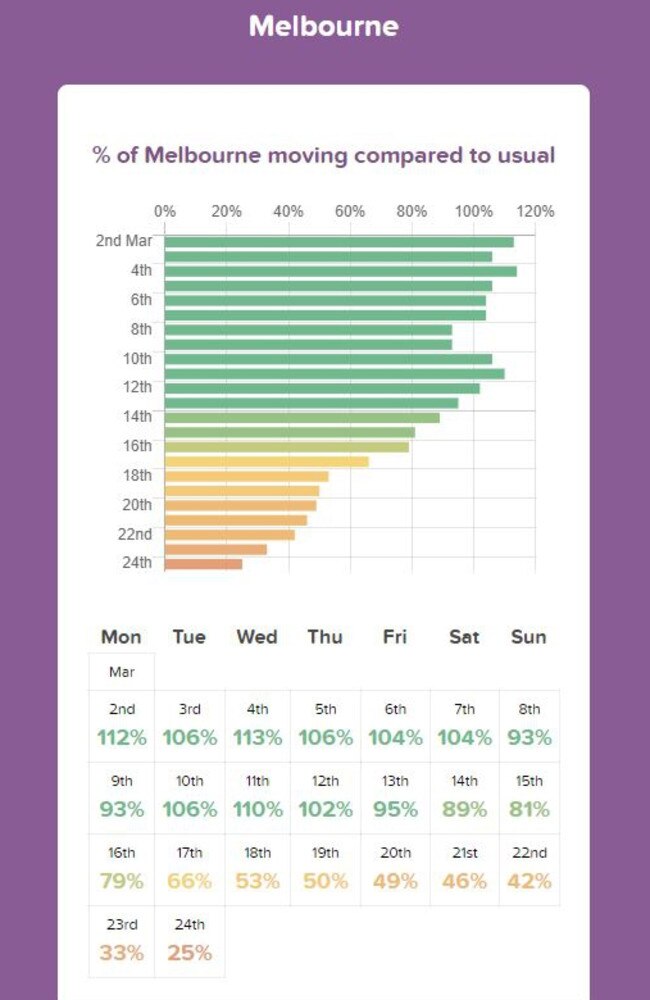
The data, which is based on public transport trips planned within the app, showed Australia still had a long way to go to catch up to progress made in other capitals, however, with Milan and Rome in Italy down to just nine and 16 per cent of normal movements over the past fortnight, and Seoul, Madrid, Seattle, and Tokyo all rated below half normal movements.
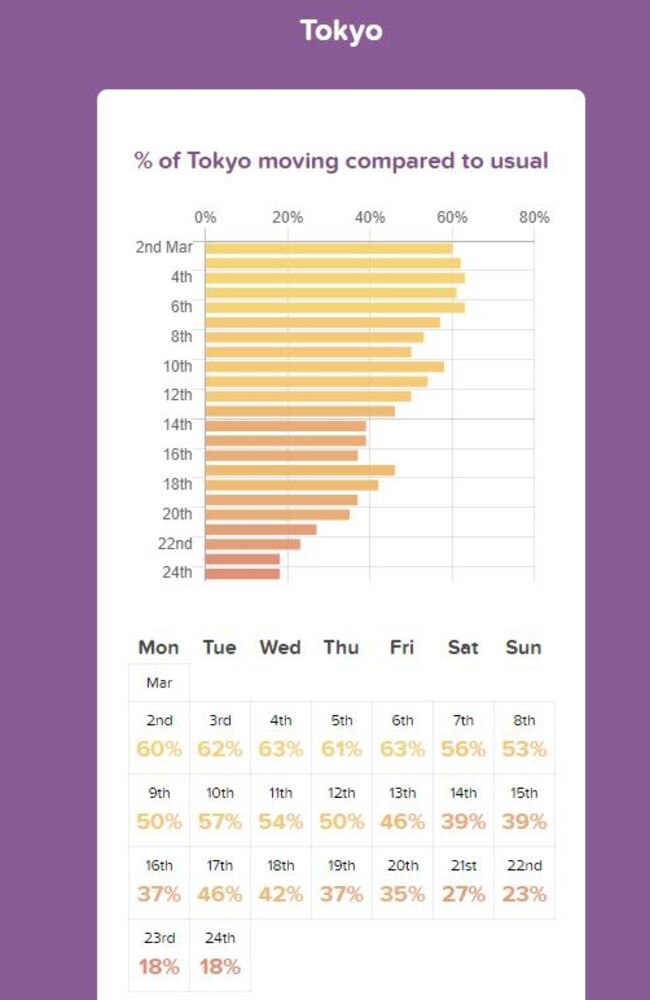
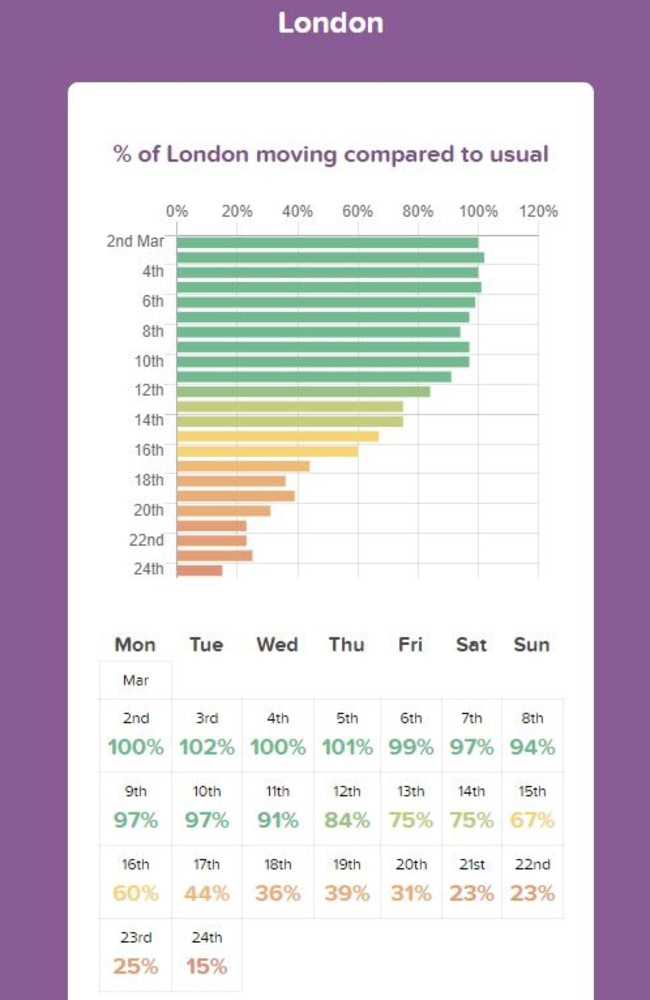
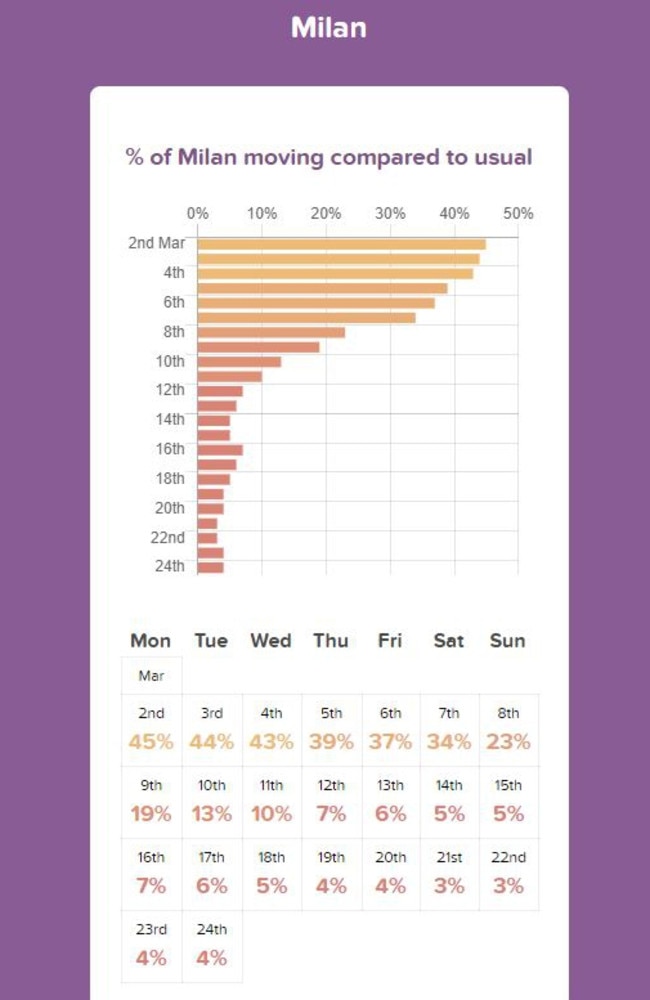
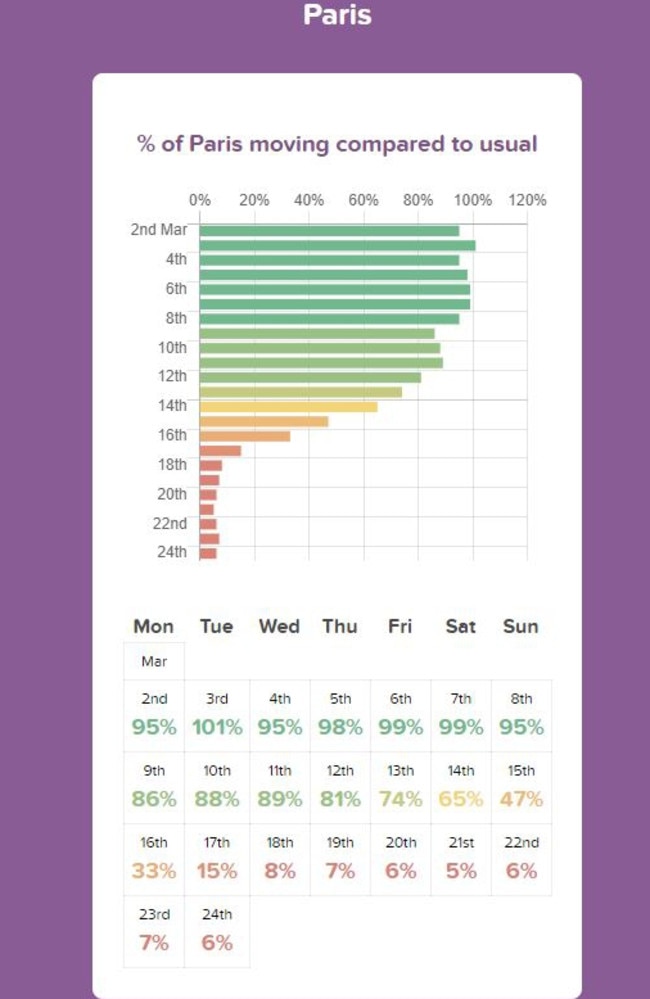
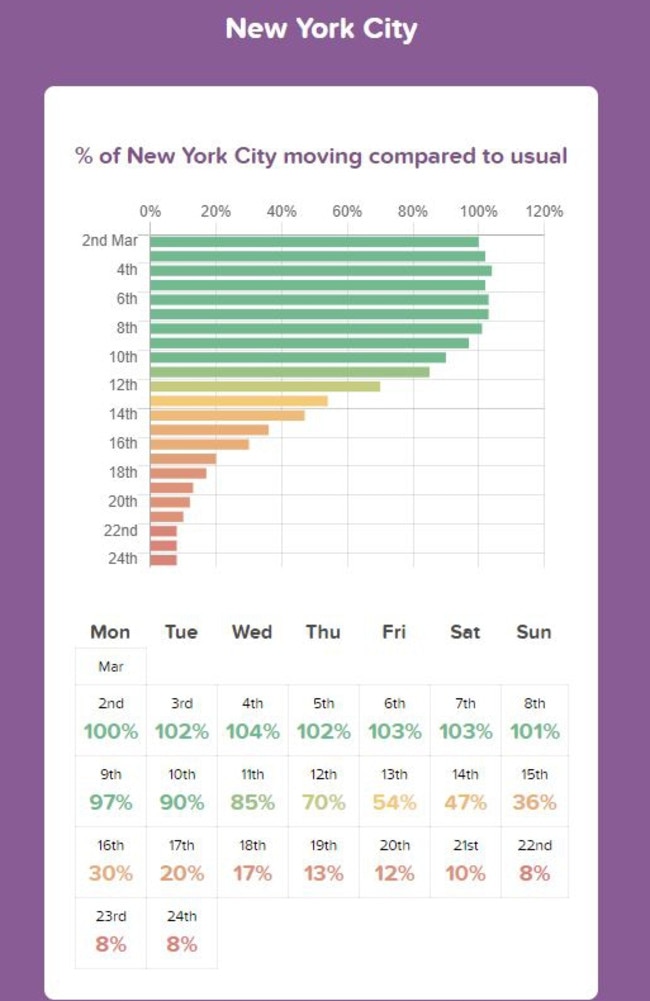
Many capitals have reacted quickly to requests to limit travel over the past days, however, with Barcelona down to just four per cent of normal movements on Tuesday, and big reductions in Vienna, Paris, San Francisco, Brussels and New York City, which were all rated below 10 per cent of their normal mobility.
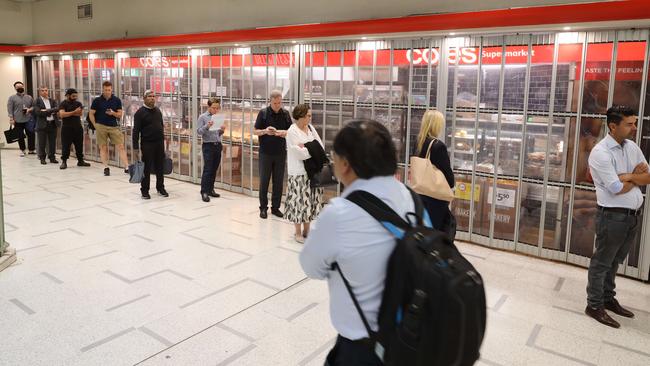
The reductions are good news for limiting the spread of the serious virus, as Professor Mikhail Prokopenko said modelling showed limiting social interactions with social distancing could make a serious impact on its spread if adopted by 90 per cent of the population, and could control COVID-19 in Australia within 13 to 14 weeks.
But because the modelling used the 1000-case threshold that Australia passed on March 21 as a baseline, and the number of cases had since spiked, it would require an extra four weeks of strict measures before the virus could be controlled.
The University of Sydney researchers defined strict social distancing as any person in one household going out once every five days, or one member in a family going out daily, so long as the other four family members stayed home permanently.
Every day that stricter measures were delayed meant several more days under a longer suppression policy, the research team found.
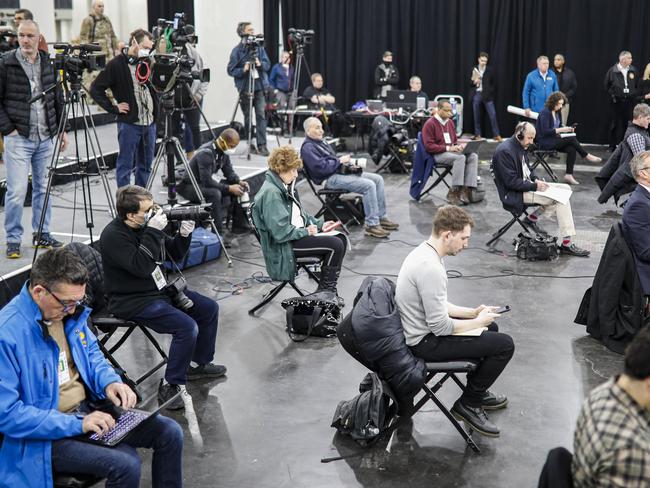
Prof Prokopenko said it was hard to know how much Australia was complying with strict social distancing at the moment.
“My own perception, and I’m not an expert in surveillance or anything like that, is that we’re below 50 per cent (compliance),” he said. “It may be slightly higher, but it’s definitely not at 80 per cent.”
A compliance rate of 80 per cent was essential, he said, “to have any chance of bringing the number of news cases down”. That sort of rate would bring the virus under control in four or five months, or about August, the research shows.
“If we go with 70 per cent compliance, the growth (of the virus) slows but the numbers still go up,” he said.
Getting people to comply with strict social distancing presented challenges, and the government should consider incentivising people, Prof Prokopenko suggested.
“We can’t follow the path that China followed, with the army and the national guard on the streets, and a curfew. We are unlikely to succeed on this path. We live in a free society, so we need to use incentives to encourage people to do the right thing,” he said.
“People who are really hit hard financially right now, they need to be incentivised to follow this message.”
Although the measures needed to control the virus were onerous, Prof Prokopenko said the modelling showed that a solution to the coronavirus crisis was possible.
“There is light at the end of the tunnel, and what I keep telling my friends is that we should choose a scenario where we control the disease rather than letting the disease control us,” he said.
“If we follow this 80 per cent social distancing we are essentially controlling (the virus). With our actions we make it happen, and that in itself is an uplifting message I would say.”
Originally published as How Australia could beat COVID-19 by July


